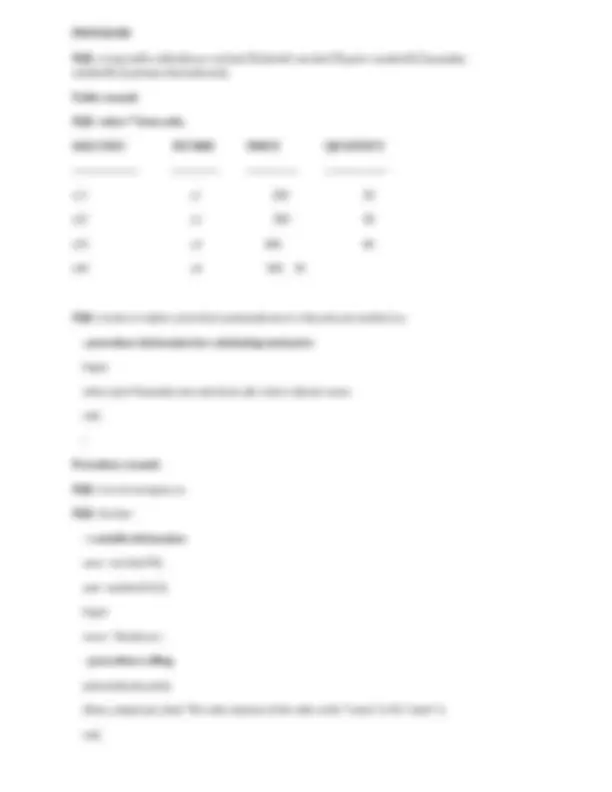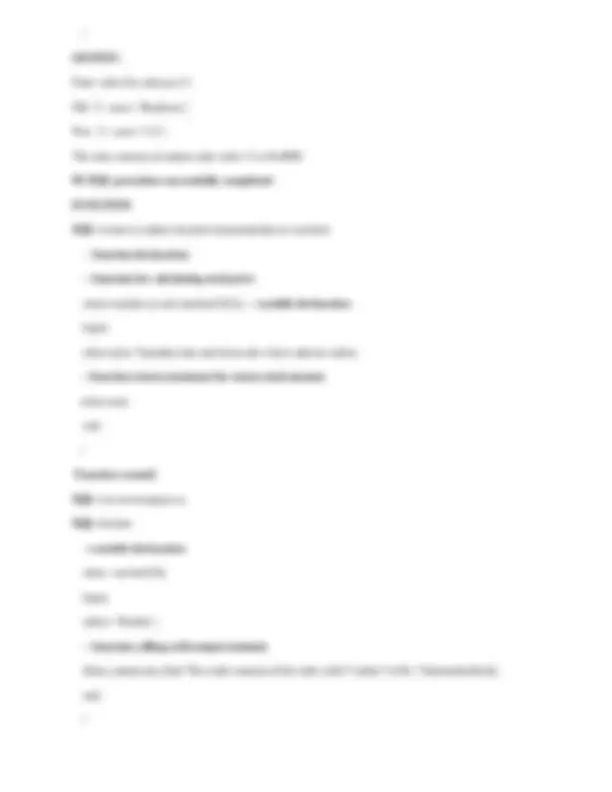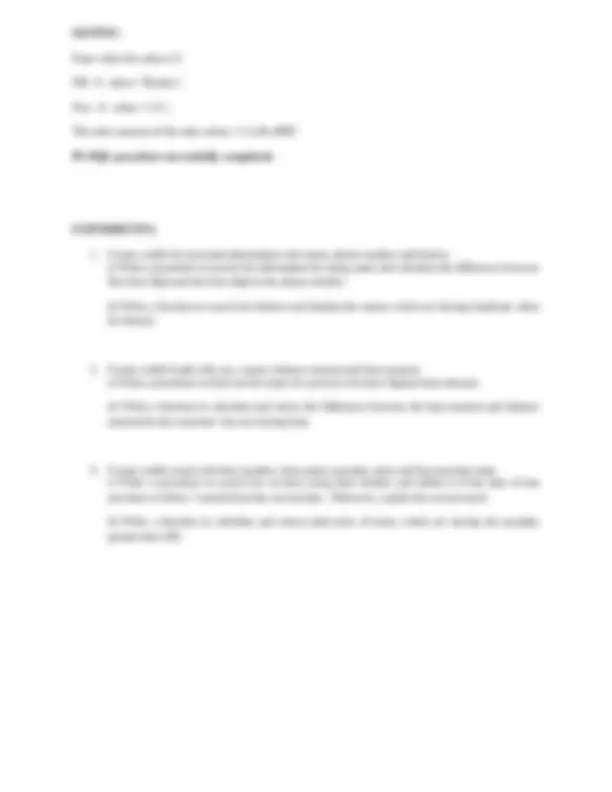





Study with the several resources on Docsity

Earn points by helping other students or get them with a premium plan


Prepare for your exams
Study with the several resources on Docsity

Earn points to download
Earn points by helping other students or get them with a premium plan
Community
Ask the community for help and clear up your study doubts
Discover the best universities in your country according to Docsity users
Free resources
Download our free guides on studying techniques, anxiety management strategies, and thesis advice from Docsity tutors
The concept of Procedures and Functions in PL/SQL, their syntax, execution methods, and provides examples of creating procedures and functions. Procedures and functions are stored programs in Oracle Database that can take zero or more parameters and return no or a value respectively. They can be executed from SQL prompt or within another procedure. the creation of procedures and functions, their execution methods, and examples of creating procedures and functions.
Typology: Exams
1 / 7

This page cannot be seen from the preview
Don't miss anything!



